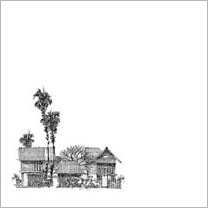 |
Design Team Case team and people from xxxxx community worked together to find an appropriate house design, that was both cheap and solved the limitation of building new houses on a restricted site. Loans were provided by UCDO to enable people to start a new home. As a result of working together, four house types were designed. In each house type the people took active roles in the design process, the collaboration came up with a design that served the needs of the people. The house designs were either semi detached or terraced, which reflected the basic needs of the people and their aspirations. Terraced housing solved the problem of the budget limits and plot size limitation. |
Aspirations
In Thailand a plot size of 6 x 14m is a usual mode in normal middle-income housing estates. In the beginning the people wished to live in a typical housing layout, found in such housing estates. The people believed the best solution was to have a high-density scheme with terraced housing of monotonous straight streets with a house design that spread over the whole plot, jammed closely to their neighbours plots.
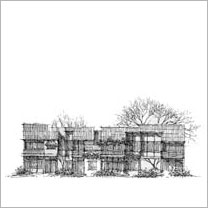 |
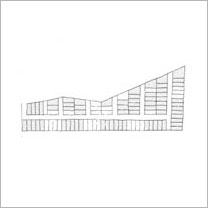 |
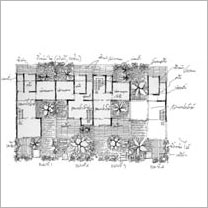 |
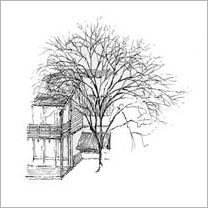 |
Through particpatory workshops, the limitations of such a dense site layout were explored. Issues of lighting and ventilation were raised to show the design weaknesses. The limits of only opening up voids either front and back, prevented good ventilation and allowed a great deal of heat transfer from plot to plot. Similar problems of poor lighting were raised as the tightly packed housing did not allow much natural light, causing darkness within the plot, resulting in a waste of energy in artificial lighting. We attempted to solve these problems by setting more open space in the plot to increase the outline of the house that opened more voids to allow natural lighting and ventilation. The carving of open space around plots allowed for a greater area for recreation. The additional open space opened up by the light and ventilation considerations, also created diverse street elevations that were more interesting than the monotony of a terraced row.
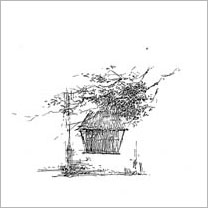 |
Process Learning The project faced many difficulties from the start, and the case study is introduced as a project where lessons can be learnt and where areas of the process can be improved in the future. During the weekly workshops, We tried to get people involved in the process as much as possible. The people at first were unsure why we were there and how we could help, little introduction had been given before our arrival. We had to work very quickly and adapt to the communities requirements, defining our role and theirs. We were keen to establish equal partnership, although it takes time to nuture relationships with different groups of people. |
| Designing with simple equipment. Each family was given a card grid 1m=1inch of their plots. Furniture layouts were formulated from scaled templates of beds, toilets, stairs etc. The process identified particular use and function of their plans. |
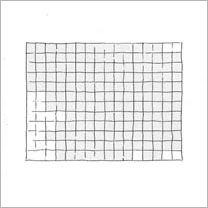 |
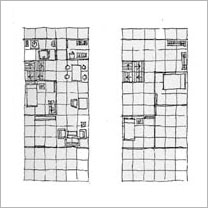 |
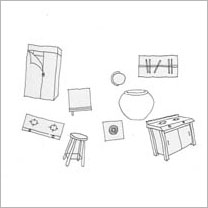 |
| The grids helped people to understand how much space they needed for each function. Sticking furniture onto grid paper was also a fun process for the people. The activity stimulated imaginations and helped them add ideas to the design. The tools helped people to understand the basic elements of building, scale and space that addressed function and their life style. We collected the peoples designs, adjusted, drafted them as a building drawing and modified until people were satisfied. TOOL | |||
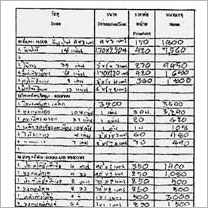 |
Problem Solving Cost estimating, we though it important to let people estimate their house costs by themselves so they understood more about materials and how they could adapt elements to reduce the cost. We helped by drawing up material schedules of their homes, dividing the house into foundations, structure, wall panels, floor, roofing, doors and windows, toilet, kitchen, pipe and electrical systems. At first, they filled out the schedules with middle class housing materials, using concrete that in some cases was not suitable for their budgets. An objective at this stage was to develop skills in problem solving both in design and costing, nuturing the skills in how to manage to build their own houses efficiently with their limited budget and hopefully without falling into debt. |
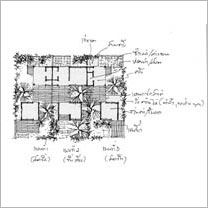 |
Suggestions The opened terraced house row improved the physical quality of the layout and was a solution for a limited budget on a restricted site. However, the house type was not a universal solution and considering the people’s different financial opportunities and the size of the community, constructing the whole project at the same time proofed to be problematic. It would have been better to work with smaller groups of 3-4 people together and to build smaller clusters of terraced houses, the design and cost could be adapted to suite the smaller groups means and way of living. The design workshops suffered from the time limits of the project and the coordination of such a large group. Working in smaller groups would have been more effective. After the third workshop, a small number of people who had participated in the process from the beginning had reached a house design. Other members of the community, who had not participated in the earlier stages, wanted to use the first groups’ design. This caused a conflict. They wanted to use ‘ready made design’ to apply for a building permission certificate. Replicating other people’s house designs did not answer their individual needs or give them the understanding of the design. The size of the group meant there were many different backgrounds and attitudes. Trying to adhere to all at once was a problem. Some participated in the process, others did not, some found individual solutions others wanted a uniform solution. More time would have allowed the differences to be answered and other interests met. |
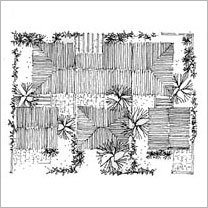 |